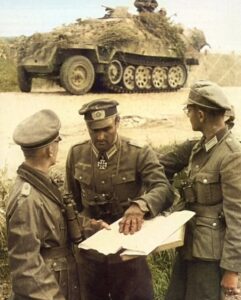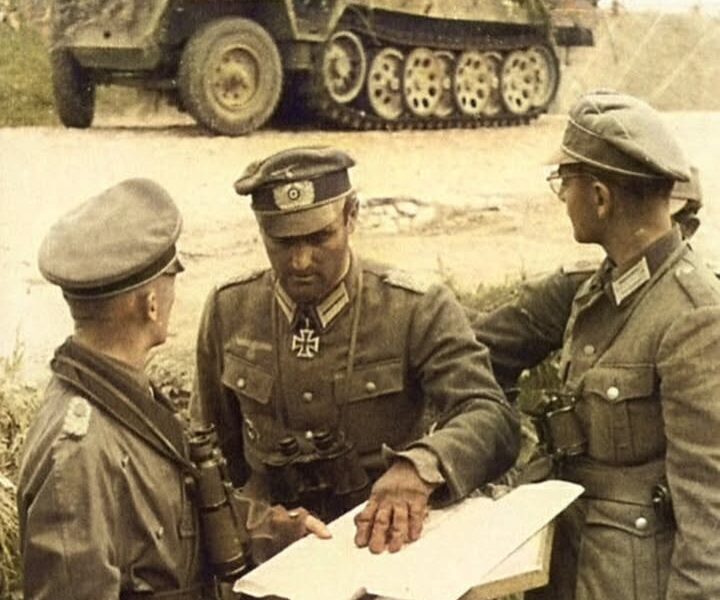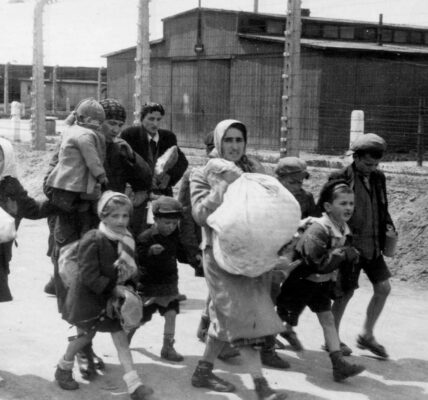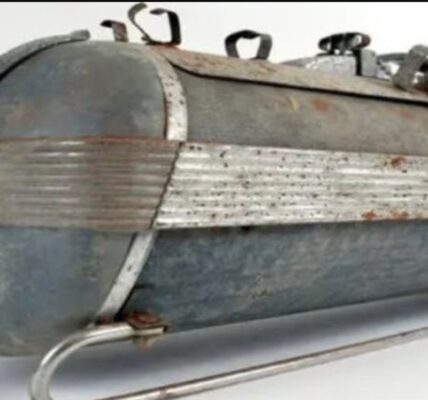


History of the special vehicle 251
This vehicle was a familiar sight and was commonly associated with the German infantry throughout World War II. It was originally a simple armored version of the Sd.Kfz . 11 half-track. The half-track was one of several solutions to the problem of poor off-road capability of trucks and associated special vehicles. Developed by Hanomag in 1938, the Sd.Kfz . 11 was the prime mover for the 105 mm (4.13 in) LeFH howitzer and the 37 mm (1.46 in) Flak 43 gun. 9,000 examples were built by 1945. This company was the obvious choice to meet the next Waffenamt’s specification, which called for an armored vehicle capable of transporting a detachment of Panzergrenadiers and their equipment, enabling it to compete with Panzer divisions. Each German mechanized infantry corps was to be equipped with 100 of these vehicles. Protection had to be adequate against small arms fire and artillery splinters, and the armament was to consist of two MG 34 machine guns for defense and direct support. In German nomenclature, it was classified as a medium armored personnel carrier.
Design of the Hanomag half-track vehicle
Since the Sd.Kfz . 251 was built by the same manufacturer as the Sd.Kfz . 11, the obvious choice was to use the chassis of the HL kl. 5 as a base, on which a stronger frame was constructed to support the armor plates. After some sketches, the sloped armor that characterized this type was adopted from the previous prototype of the 7.5 cm self-propelled gun L40 from Hansa-Lloyd (1937). This was a risky decision in terms of efficient storage and ease of production, but the idea behind it was simple. The slope forced bullets and shrapnel to penetrate a larger portion of the plate while keeping weight low. The armor protected the entire length of the engine, radiator, driver’s seat, and open rear compartment. It was 14.5 mm (0.57 in) thick, with a 14° nose slope, 10 mm (0.39 in)/80° for the glacis (engine cover), 8 mm (0.31 in)/35° for the side and rear plates, and only 6 mm (0.24 in) for the flat floor.
The fuselage was fully welded and constructed from prefabricated sections. The open configuration provided a better overview of the situation and enabled a better firing angle and arc for the machine guns. The body consisted of two main sections: the front cowling and the rear open “passenger compartment.” These two sections were made of steel plates welded and riveted to the basic chassis. They were riveted together, with the reinforcements located behind the driver’s compartment. This measure, together with the basic strength of the vehicle’s chassis, ensured exceptional rigidity.
The engine was the same Maybach TUKRM HL 42 (4.17 l) as in the Sd.Kfz 11. It was a water-cooled, six-cylinder, four-stroke gasoline engine with magneto ignition, producing 100 hp at 2,800 rpm. The power-to-weight ratio was 12.8 hp/t, allowing an average speed of 52 km/h on the road or on very flat terrain, and 21 km/h off-road. This was relatively fast for an armored half-track vehicle. Steering was via the front axle, and the turning circle was 11 m. The Zgw 5001/280/140 or Zpw 5001/280/140 tracks were relatively large and offered excellent grip, especially with the W 302 rubber treads. Each consisted of 55 and 56 (left/right) links and was 7.7 and 7.84 meters long, respectively. The Sd.Kfz . 251 was one of the first armored vehicles to be equipped with overlapping wheels, just like the Kettenkrad. This “slack track” reduced ground pressure, but proved problematic in very muddy terrain, such as during the Russian “Raspoutista.”
The hollow weight was 6.8 tons, in combat configuration 7 tons, and fully loaded 8.5 tons or more. It had a payload capacity of 1.5 tons and a towing capacity of 2.7 tons, meaning it could carry a Pak 36 or a 20 mm (0.79 in) anti-aircraft machine gun. The normal crew consisted of 12 people, including a driver, platoon commander, and ten Panzergrenadiers with equipment.
Production and development: Versions A and B
The Ausf. A (Ausführung A or “A-Version”) was the first Medium Armoured Personnel Carrier . It appeared in mid-1939 and was initially assigned to the Panzergrenadiers of the 1st Panzer Division (stationed in Weimar in the spring of 1939), the best-equipped German unit at the outbreak of the Polish campaign. Production figures for 1939 amount to only 232 and production was handled by Hanomag in Hanover, Büssing-NAG in Berlin-Oberschöneweide, Weserhütte in Bad Oeynhausen, Wumag in Görlitz and F. Schichau in Elbing.
The Ausf. B appeared in 1940 and was similar in all aspects, with the exception of the relocated radio antenna (from the step to the rear fighting compartment) and the removal of the rear sight to simplify production. Only 337 more were delivered by the end of 1940. An estimated 500 took part in the French campaign.
The Ausf.C
The Ausf. C (late 1941) was also very similar, but had a new, flat engine nose, 14.5 mm (0.57 in) thick, with no access hatch, replaced by a simple opening for the manifold. Other minor simplifications for mass production affected the rear access doors. The engine also received attention: the front hood cooling grille and side access hatches were removed and replaced with large, open ventilation boxes; the lower part of the hull was modified to increase storage space. The rear muffler storage boxes were relocated rearward, and the mufflers themselves were completely modified. The rearview mirror was moved from the driver’s side viewing slot to a lower position. The headlights were now attached directly to the chassis, and the bumpers were removed and replaced with tow hooks. Production for 1941 is estimated at 389 vehicles. However, an increase in production was urgently needed, but the numbers only rose to 424 by 1942 and to around 1,200 for 1942. The unit cost was 22,560 DM.
The Ausf.D
This version was introduced for mass production in the spring of 1943 as a series of minor design changes. The previous versions, also known as the “Old” versions (approximately 4,650 from June 1939 to September 1943), included versions A, B, and C, but the Ausf. D, also known as the “New,” was different. 10,602 examples were built between 1943 and 1945 by Hanomag, MNH, Schichau Wumag, Weserhätte, Borgward, Evans+Pistor, Deutsche Werke, and Büssing-NAG. The modifications included numerous changes to the production design. The number of armor plates was reduced from 19 to 9, and fixed stowage boxes with lockable hatches were added, replacing the earlier rear silencers. Simple vision slits, simple flat hood panels with relocated air intakes under the hull, a simplified, rearward-sloping tail with flat door panels, and many other minor modifications allowed for a simplification of design with the same level of protection and far less labor. In times of increasing Allied bombing and dwindling metal supplies, considerable engineering effort was required. However, the internal configuration was unchanged from the Ausf. C, and the FuG Spr Ger f radio remained in use. By this point in the war, the Ausf. D required more and more ad hoc modifications and conversions due to the dramatically increased demand for fire support platforms of all kinds.
The “little brother”, Sd.Kfz.250
The specifications for the Sd.Kfz.250 were first issued in 1939 by the Inspectorate for Motorized Troops (AHA/In 6). It was a lightly armored half-track vehicle intended not as a transport or towing vehicle, but rather to accompany tanks in attack. Future roles included reconnaissance, radio communications, supply, mobile headquarters, and artillery observation. 6,630 units of the vehicle were produced from 1941 to 1945 by Demag, Adlerwerke, Büssing-NAG, and MWC. Externally, it was a shortened version of the Sd.Kfz.251 , which was also used in numerous fire support and specialized variants. Büssing-NAG and Adler built the chassis, Saurer Werke from Vienna the engine and transmission, DEW Hannover and Steinmüller from Gummersbach the superstructure, Bismarckhütte from Upper Silesia the armor plating, the hull assembly was carried out by Evens & Pistor from Helsa, equipment, monitoring and delivery were provided by Demag AG from Wetter.
The Sd.Kfz.251 Hanomag in action
The Sd.Kfz . 251 was seen as a real improvement in infantry mobility and reinforced the doctrine of accompanying tanks with motorized infantry. It was also a familiar propaganda tool in newsreels, which led most Germans to believe that the bulk of the German infantry was transported by these armored vehicles. But the reality could not be further from the truth. Due to the cost and slow production, these vehicles were only allocated to a few Panzergrenadier platoons, quasi-specialized elite units within the infantry, and only to the best-equipped Panzer divisions. By September 1939, only the 1st Panzer Division was partially equipped with these vehicles. By the start of the Western Campaign in May 1940, perhaps five Panzer divisions were also partially equipped. At this point, these were the medium infantry fighting vehicle Sd.Kfz . 251/1, Gerät 901 for the Panzergrenadiers, and the medium infantry fighting vehicle Sd.Kfz . 251/1 without a radio. In regular use, this vehicle never encountered dangerous situations that could have resulted in death due to its lack of armor. However, this was later limited by the use of some close support versions, such as the Sd.Kfz . 251/10, which was equipped with the 37 mm Pak 36 (short-range anti-tank gun). Fortunately, most of the developed versions were used as rearguard support vehicles, such as the mortar versions, the medium infantry fighting vehicle (grenade launcher) Sd.Kfz . 251/2, Geräte 892, or the famous medium infantry fighting vehicle Sd.Kfz . 251/1 (Wurfrahmen 40), which was used very successfully after 1944 for radio transmission, coordination, armored ambulances, and artillery observation.
The Sd.Kfz .The 251 also saw limited service in North Africa, as only two Panzer divisions were involved. There was no truly tropicalized version, merely later field modifications. The rear “bathtub” compartment could become incredibly hot in the scorching sun of that region, and the engine hatches were all open to improve cooling while moving. The majority of the A, B, and C saw service in the Balkans, Greece, and Russia until the summer of 1941. By this time, most Panzer divisions were at least partially equipped with this vehicle. Fewer than 1,000 examples were available at any one time for Operation Barbarossa. Production was later increased, but at the same time, more and more were converted into support and special-purpose vehicles. In Russia, the situation on the ground required many conversions for the engineers assigned to the Panzer divisions. Although the Ordnance Office officially knew of only 23 main versions, countless modifications are likely to have existed in the field, as evidenced by photographs showing vehicles fitted with captured foreign guns, unconventional antennas, or hastily converted into command and observation vehicles.
In Russia, the winter air meant that the engine would not always perform at its best or would not start at all, and all rubber parts were prone to cracking and disintegrating in the extreme cold. Mobility was generally excellent, but the thick, sticky mud from the spring and summer rains would lodge and harden in the interlocking wheels. When the simplified Ausf. D was introduced, production numbers rose again, but this vehicle was still in short supply for the Panzergrenadiers as increasing numbers were diverted to fire support and anti-aircraft duties. The most successful in this regard were the 7.5 cm KwK37 infantry fighting vehicle, or “Stummel,” used for artillery support, and the 7.5 cm PaK 40 L/46 anti-tank gun mounted on a medium infantry fighting vehicle, which replaced the ill-fated Sd.Kfz . 251/10. The famous rocket launcher version, or 251/1 II (also called the “ground-launched Stuka”), used massive projectile rockets with a diameter of 280 mm (11 inches) or 320 mm (1 ft 1 in), which had the same devastating effect as a 500 kg bomb dropped by the Stukas, though certainly not as accurately.
The Sd.Kfz.251 variants
Das Sd.Kfz.251/1 (II/III)
Although oddly designated 251/1, these two late versions have nothing in common with the main version.
The Sd.Kfz . 251/1 II Mittlerer Schützenpanzerwagen mit Wurfrahmen was a heavy rocket launcher platform (also called a “Stuka zum Fuß”), equipped with six massive 28 cm Sprenggranate (HE grenades) or 32 cm Flammgranate (Incendiary grenades), the latter using napalm. They were called Wurfrahmen 40 and had a range of 1.9 and 2.2 km respectively. First ordered in late 1940, these mortar rocket launchers only appeared in limited numbers in 1943–44. The Sd.Kfz . 251/1 III Mittlerer Schützenpanzerwagen (IR) “Falke” was a standard Ausf. D (mostly) vehicle, specially equipped with infrared equipment for night operations in conjunction with the Sd.Kfz . 251/20 Uhu, accompanied IR Panther detachments. This version is also called the 251/20 “Falke.”
The Sd.Kfz.251/2 armored personnel carrier (grenade launcher)
This was the standard version of the motorized mortar used by the infantry. It carried a GrW34 81 mm (3.19 in) mortar with 66 rounds. The recoil baseplate could be removed for unloading.
Sd.Kfz.251/3 – medium command armoured vehicle (radio-controlled armoured vehicle)
The main radio version, which was divided into five versions, each using improved radio combinations, such as FuG8 + FuG5 (I, II), FuG1 + FuG7 (III), FuG11 + FuG12 (IV – long range, with a 9 m telescopic mast and a command subvariant) and the FuG11 for the fifth subversion.
Sd.Kfz.251/4 – Armoured personnel carrier for ammunition and accessories of the leIG18
This version was reinforced to tow heavier guns, such as the 7.5 cm (2.95 in) light infantry gun 18, the 50 mm (1.97 in) Pak 38, the 75 mm (2.95 in) PaK 40 and the 10.5 cm (4.13 in) light field howitzer leFH18.
Sd.Kfz.251/5 – Armored personnel carrier for the pioneer platoon
The engineer train was modified to carry a pair of lightweight, demountable assault bridges on the roof. Inflatable boats could be transported in the side storage compartments.
Sd.Kfz.251/6 – medium radio-controlled armoured vehicle (command armoured vehicle)
This early command and radio vehicle housed map boards and cipher and encryption machines based on the Ausf. A/B versions in a newly arranged compartment.
Sd.Kfz.251/7 armoured engineer vehicle
Another engineer assault vehicle, equipped with bridge ramps and special fittings on the upper hull. Subversions I and II used different radio equipment.
Sd.Kfz. 251/8 Armoured Ambulance
The armored ambulance version. It could transport four wounded soldiers on stretchers, two lying down and four sitting, or ten lightly wounded soldiers sitting down. To facilitate access, a folding step was installed under the doors. Most vehicles were converted from early AB and C versions during the war. They were unarmed and covered with a large tarpaulin or roof. The subversion II was equipped with a long-range FuG5 radio and connected to mobile headquarters.
Sd.Kfz.251/9 – Armoured personnel carrier (7.5 cm KwK 37 L/24) “Stummel”
The standard SAF variant, also called the “Kanonenwagen” (Gun Car), was armed with a short-barreled 75 mm (2.95 in) howitzer using the same gun carriage as the StuG III. It was nicknamed the “Stummel” (Stub) and saw widespread service on the Eastern Front. Büssing-NAG first ordered the vehicle according to a March 1942 specification and delivered two prototypes that June, which were tested in Russia. In the following months, an initial batch of 150 vehicles based on the Ausf. C was delivered. In late 1944, a major modification included a revised, modular, taller gun carriage with a coaxial MG 42 for close-range defense.
The latter also offered better protection, improved depression angle, and a higher traverse (20° on each side). The normal traverse was 10–12° on each side and -5 +20° elevation. The ammunition supply consisted of 52 rounds, but many were carried wherever possible, primarily on rifle racks and stowed in particularly soft pouches. A pair of binoculars and a misplaced 2-meter Fuspr.f rod antenna were also available. The Stummel was first used by the 4th SS Panzer Regiment “Der Führer,” the 2nd SS Panzer Division, and later (after the Ausf. D was commissioned in 1944) by most armored reconnaissance units and the “Hermann Göring” Paratrooper Division. Such vehicles could be transported in the Me 323 “Gigant.”
Sd.Kfz.251/10 – Armoured personnel carrier ( 3.7 cm PaK )
The early standard version for anti-tank support for the Panzergrenadiers, equipped with the 37 mm Pak 36 cannon, which had an effective range of only about 1,200 m. Many photographs show that the removable upper plates of the shield were omitted, as the crew was well protected within the hull and to deceive observers, as this made it resemble the machine gun shield of the standard transport version.
Sd.Kfz.251/11 – Armoured Telephone Vehicle
A telephone cable-laying version based on the Ausf. C. A large, box-shaped laying device with cable reels was housed in the rear compartment, leaving little room for the operators. The laying devices were used to build a telephone network in the occupied territories of Russia.
Artillery support vehicles
Sd.Kfz . 251/12 – Surveying and Equipment Armored Vehicle : A visual survey vehicle, the primary artillery observation variant. Sd.Kfz . 251/13/14 – Sound Recording Armored Vehicle : Sound recording carrier variant. Sd.Kfz . 251/15 – Light Evaluation Armored Vehicle: Carrier variant with lightning detection. Sd.Kfz . 251/18 – Observation Armored Vehicle : Artillery-independent observation variant, which included three radio sub-versions.
Sd.Kfz. 251/16 – Flame-Tanked Armored Vehicle
The main flamethrower variant, used primarily by SS Panzergrenadier units. It initially consisted of a removable flamethrower at the rear and then two 14 mm flamethrowers mounted on pivot points on the vehicle, while the forward defensive machine gun was mounted in the hull. The flamethrowers were protected by small masks, and their range was approximately 35 meters, depending on wind and climatic conditions. They were fed by two internal 700-liter tanks at the rear, but the required fuel proved to be scarce. The crew was protected by fireproof overalls, and the compressor, which had a two-hour autonomy, allowed approximately 2,700 short bursts (2 seconds). As stipulated, each Panzergrenadier regiment was to be equipped with a single platoon of six flamethrower vehicles, including two support vehicles with an additional 1,850 gallons. They were converted from Ausf. C and D vehicles and apparently introduced in January 1943. They fought in Russia, Italy, Holland (Arnhem 1944), and northern France.
Sd.Kfz.251/19 – Telephone Operations Armoured Vehicle
A telephone exchange vehicle that was used in coordination with the telephone armored car and operated in supposedly “quiet sectors” far behind the front line.
Sd.Kfz. 251/20 – Armored personnel carrier (infrared searchlight)
This version appeared in late 1944 and was assigned to special night attack tank regiments equipped with IR Panthers (with infrared searchlights). This version featured a 60 cm infrared searchlight with a range of 1,500 m, illuminating targets well beyond the range of the Panther’s IR equipment. It was also used alongside Vampir night attack units equipped with portable infrared equipment.
Sd.Kfz.251/22 – 7.5 cm PaK40 L/46 on medium armored personnel carrier
The “Pakwagen” was one of the best anti-tank support vehicles and was equipped with a high-speed PaK 40 L46 or L48 cannon. These were frequently used as operations became more defensive. Thanks to the gun’s range, the vehicle could be positioned relatively safely from well-camouflaged, prepared positions. However, the chassis was not designed to withstand the additional weight, nor the pressure and recoil, leading to many mechanical failures and excessive structural fatigue. Nevertheless, Hitler gave this version top priority in December 1944. The carriage consisted of two H-shaped beams welded to the floor in the center of the rear compartment. The shield was modified with shortened angles, and the platform consisted of flat, triangular plates that held the original gun mount in place. The driver sat on the left and aimed with the PaK 40’s standard optics. The traverse range was 18 and 19°, and the elevation angle ranged from -3° to +22°. 22 shells (HE and AP) were stored. Crews usually carried additional ammunition in loose containers, which were stored whenever possible. Production figures are difficult to determine; perhaps 1,200 vehicles with Ausf.D bodies were built .
Sd.Kfz.251/23 – 2 cm Hängelafette 38 on medium armored personnel carrier
The main reconnaissance variant is equipped with a turret mount similar to that of the Sd.Kfz.234/1 armoured car and houses a QF 20 mm (0.79 in) automatic cannon.
Air defense variants
This type and all test prototypes comprised around 500 vehicles, including, according to some sources, 486 /17 and /21. The normal equipment of each Panzer division consisted of about 21 vehicles in the Panzergrenadier Battalion, one in the Regimental Pioneer Company, and seven in the Panzer Reconnaissance Company. Sd.Kfz.251/17 – Infantry Fighting Vehicle (2 cm) : (244 built). Early machines had unmodified Ausf. C and D bodies, and the 20 mm (0.79 in) cannon had a traverse of only 80°. Greater Germany pioneered this. The most widely produced type, however, was the Luftwaffe anti-aircraft version with extended sides made of folding plates. Even folded, the cannon still had a traverse of 360°. The 20 mm (0.79 in) KwK 38 was mounted in a small turret and had a pedestal mount. They were built only on the Ausf. C basis, and usually four anti-aircraft vehicles were led by a command version without a cannon, but with an FU-10 radio and loop antenna, and two MG 34 or 42 for close-range defense. Later, this version was further developed. Auto-Union AG in Chemnitz built a prototype (based on the Ausf. C), followed by about a dozen hybrid vehicles (based on the Ausf. D) with a completely open rear and converted driver’s compartment. In late 1944, a late model with the standard D body was fitted with a Schwebelafette or “gliding cradle” of box-like construction. Production numbers are unknown, but perhaps 15 in total saw service on the Eastern Front by November 1944. The 20 mm (0.79 in) cannon came in two types, the Army’s KwK 38 and the Luftwaffe’s Flak 38, which offered similar performance but proved unable to compete with the heavily armored Russian Il-2 Sturmoviks. Sd.Kfz.251/21 – Infantry Fighting Vehicle (Drilling) : (242 built) A triple Mauser MG 151/15 mm, later replaced by the Luftwaffe’s lightweight 20 mm (0.79 in) MG151. The “Drilling” prototypes were tested on the Ausf. C in early 1944, but only the D type entered production. The triple mount was belt-loaded, the inner gun holding 400 rounds, the outer 250. The mount itself was a naval-derived type and bolted to the floor just behind the transmission casing. The guns were surplus from the Luftwaffe, which now used heavier models, complete with their standard aircraft mounts. They were connected to each other at the top of the pedestal and pivoted on pivots for maximum elevation and traverse. Aiming was achieved using an optical (reflector) sight and later a simpler design with a speed ring.
They were individually operated from inside the hull and protected by a rear-opening turret. They were primarily used by the reconnaissance units of the 45th Panzer Division (three per Panzergrenadier Battalion) on the Western Front and, due to their excellent accuracy, were often able to engage soft ground targets on the spot.
Sd.Kfz.251 armored driving school vehicle, wood-powered driving school vehicle
During World War II, Germany suffered from a shortage of petroleum. The country sought alternative fuel sources for vehicles not deployed on the front line. One solution was to mount a charcoal carburetor on the rear of an Sd.Kfz . 251 half-track and use it as a driving school vehicle.
Two Sd.Kfz . 251 armored driving shoe troughs served as wood-powered driving school half-tracks.
| Sd.Kfz.251/1 specifications | |
| Mass | 5.80 x 2.10 x 1.75 m (19×6.10×5.9 ft) |
| Total weight, combat-ready | 7.81 tons |
| Crew | 2 (commander, driver) +10 Panzergrenadiers |
| drive | Maybach HL42 6-Zyl., 100 PS, 12 PS/t |
| Suspension | Half-track torsion arms, overlapping wheels |
| Top speed | 53 km/h (33 mph) |
| reach | 300 km (186 miles) |
| armor | 2 x Rheinmetall MG 34/MG 42 machine guns |
| armor | From 6 to 14 mm (0.24-0.55 inches) |
| Total production | 15.252 |





